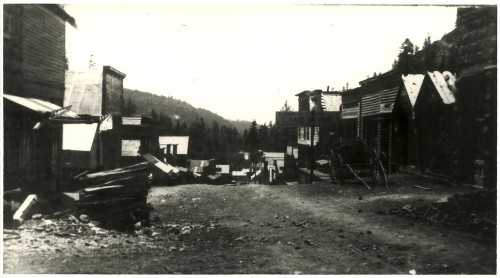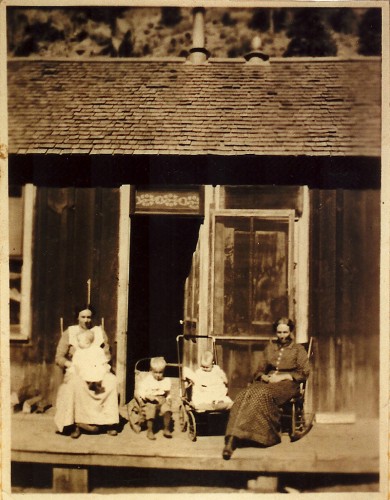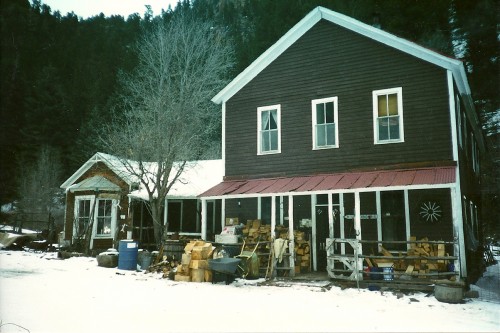
Bland, now a ghost town on private property deep in the Jemez Mountains, was started about 1894. It hit the peak of gold and silver mining there in 1900 and then was mostly abandoned by 1905. It once had a population of around 3,000 and 50 businesses, including a newspaper, a church, two banks, an opera house, a stock exchange, several mercantile stores, a stage line, and lots of saloons. All these establishments and more were on one main street because the canyon was only 60 feet wide. When something more needed to be built, additional space was blasted out of the canyon wall.

The town was named for Richard Parks Bland, a senator who fought against the demonetization of silver. Several sawmills in the area supplied timber for mining operations. One of the sawmill owners was Joseph Routledge, who then lived in Glorieta, and whose family later lived in the Jemez Mountains. A stamp mill installed at nearby Abermarle in 1898 was the first steel building in New Mexico. (A stamp mill crushes ore rather than grinding it to release the mineral, in this case gold, for further processing.)
Early prospectors found gold in 1881 in what became the Cochiti Mining District. Most of the mines were in the Bland and Abermarle groups, and each was assigned a colorful name, such as Crown Point, Tip Top, Mammoth, Iron King, Monster, No Name, Cross Keys, Old Dutch, Good Hope, Little Mollie and Sister C.
Those who want a detailed account of mining activities in the canyons near Bland may wish to read The Bland, New Mexico Story by F. Stanley, published in a limited run in 1964.
After the “gold rush” ended, a few families retained their connection to the property there. Effie Jenks, whose husband was a mining engineer, moved back to Bland when he died. According to an article in Albuquerque Journal Magazine, Nov. 21, 1978:
During her more than 30 years in the canyon, Effie lived without electricity, running water, natural gas and, most of the time, a telephone. She has a Jeep but has never had a driver’s license. . . Eventually, Effie came to own 380 acres of property in Bland and Colle Canyons. She thinks there were about 85 mines dotting her land, none of them in production. ‘I don’t really know how many mines I had, but it was an awful lot of them,’ she says. (See Bland Clippings for complete article.)

Helen Callahan Blount, who had lived in the canyon as a child, bought Jenks‘s old home and the Exchange Hotel in 1980. The December 1991 of El Cronicón (Official Publication of the Sandoval County Historical Society) was devoted entirely to her memories of Bland. To read this, as well as selection of the numerous articles written about Bland, go to Bland Stories.
Bland was burned over in the 2011 Las Conchas fire.